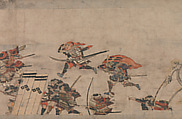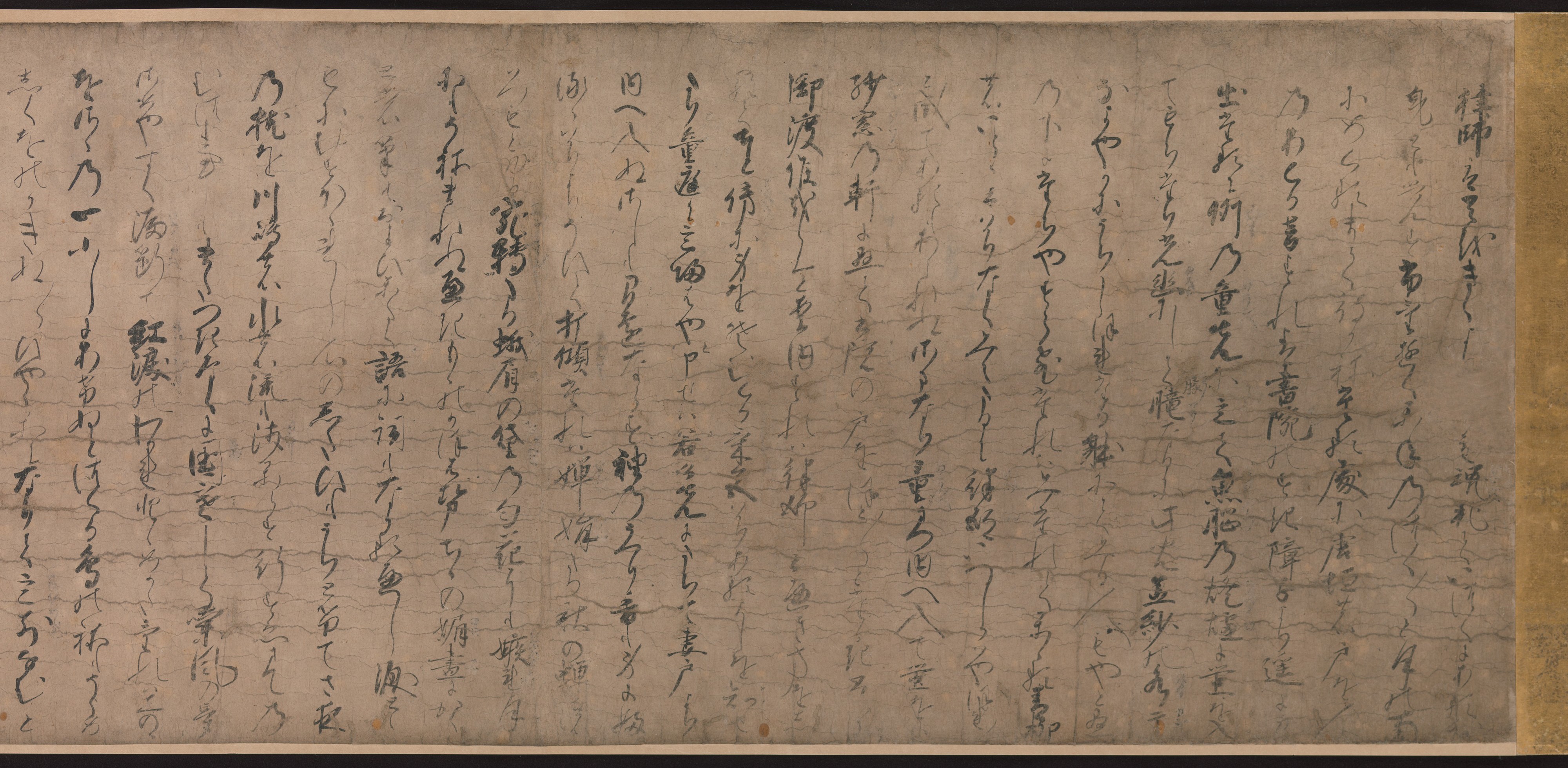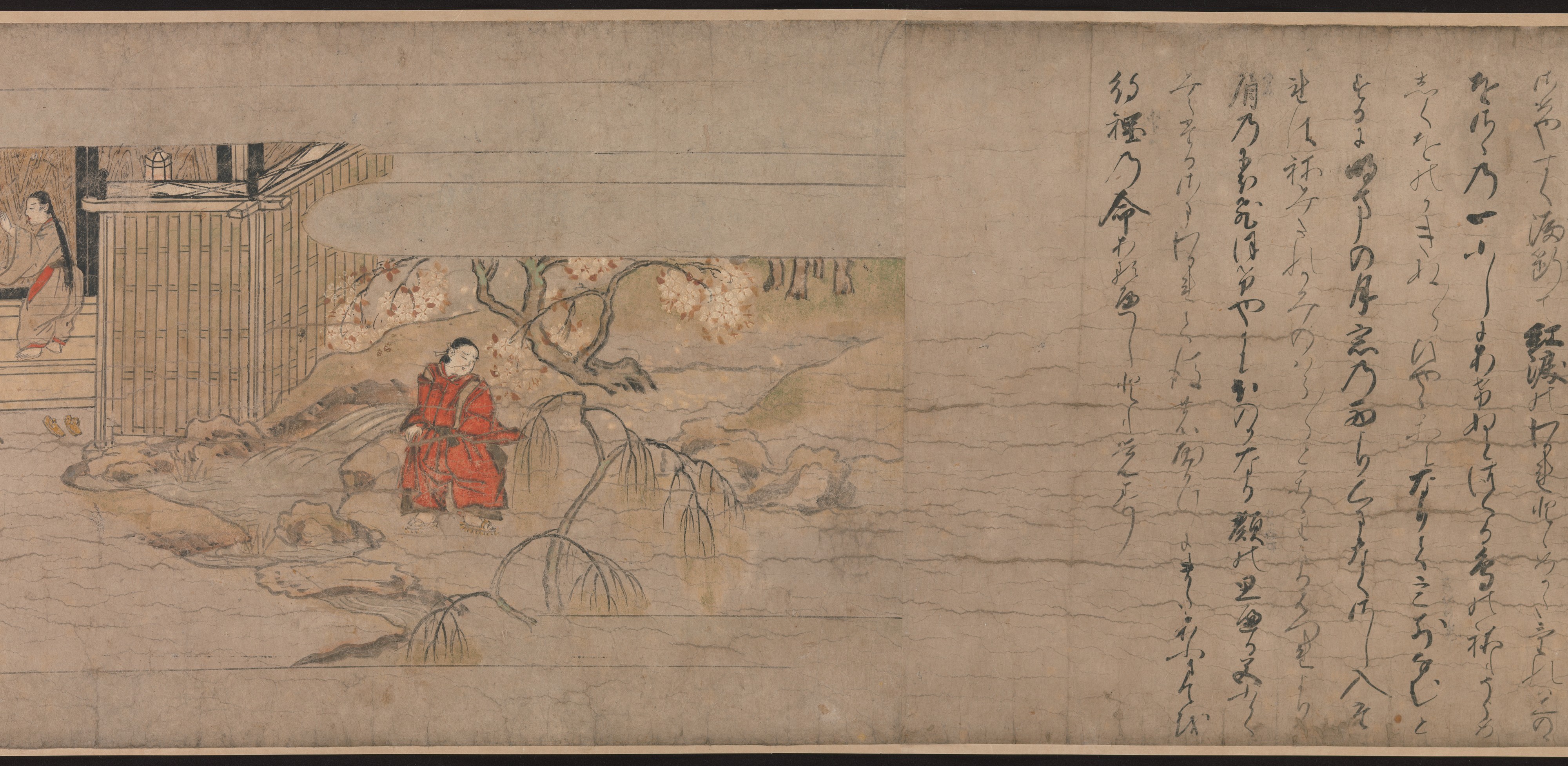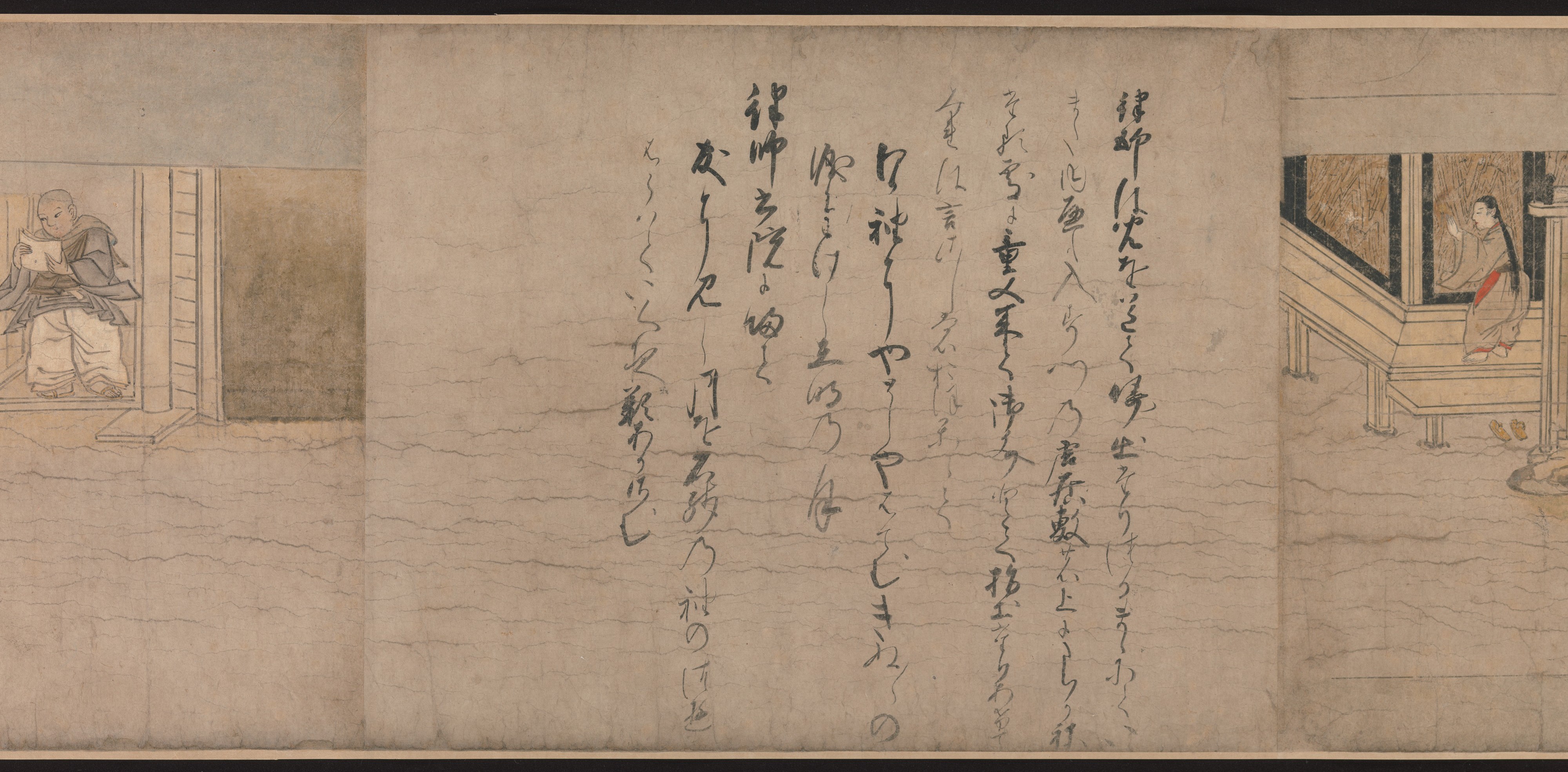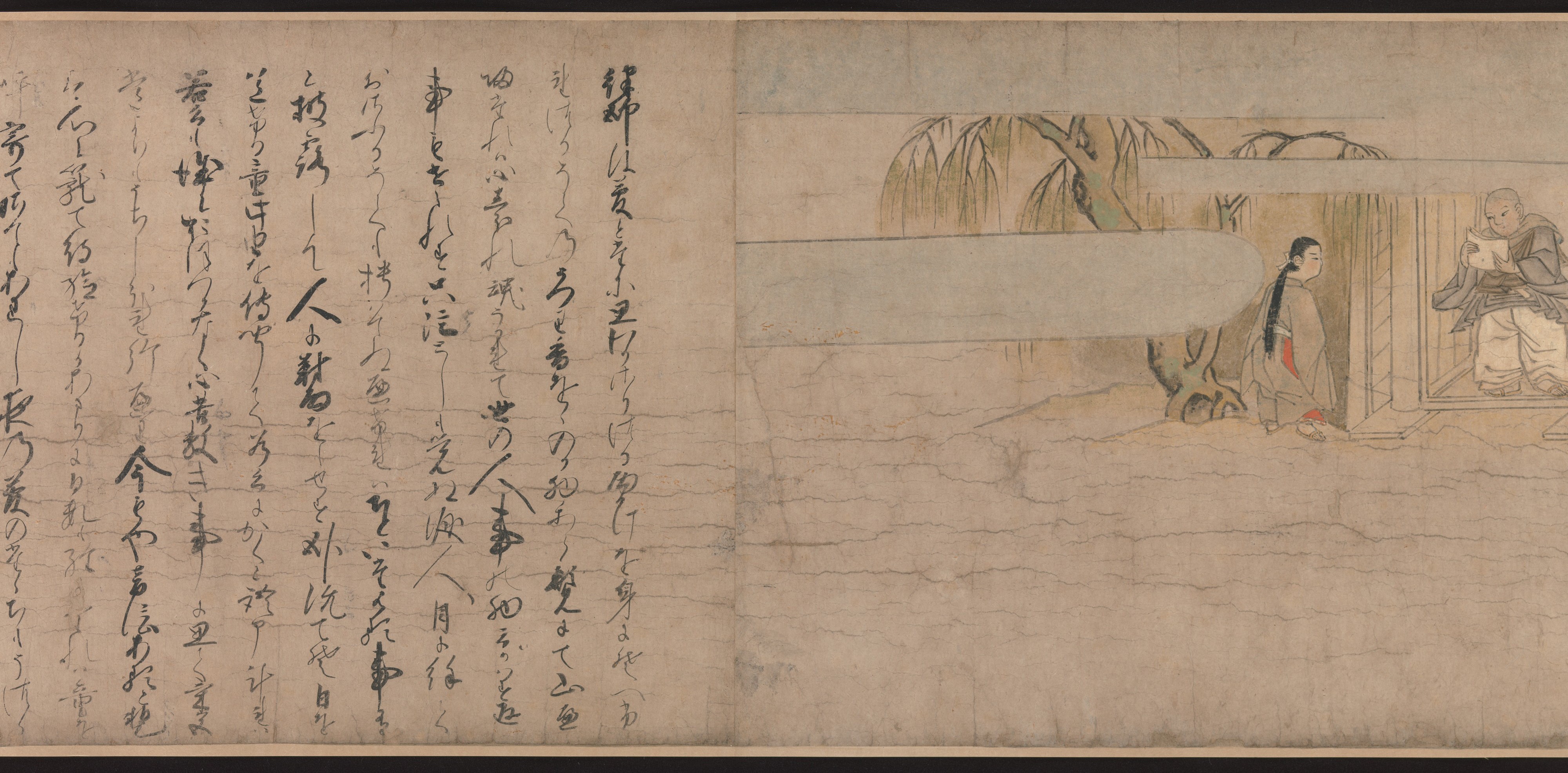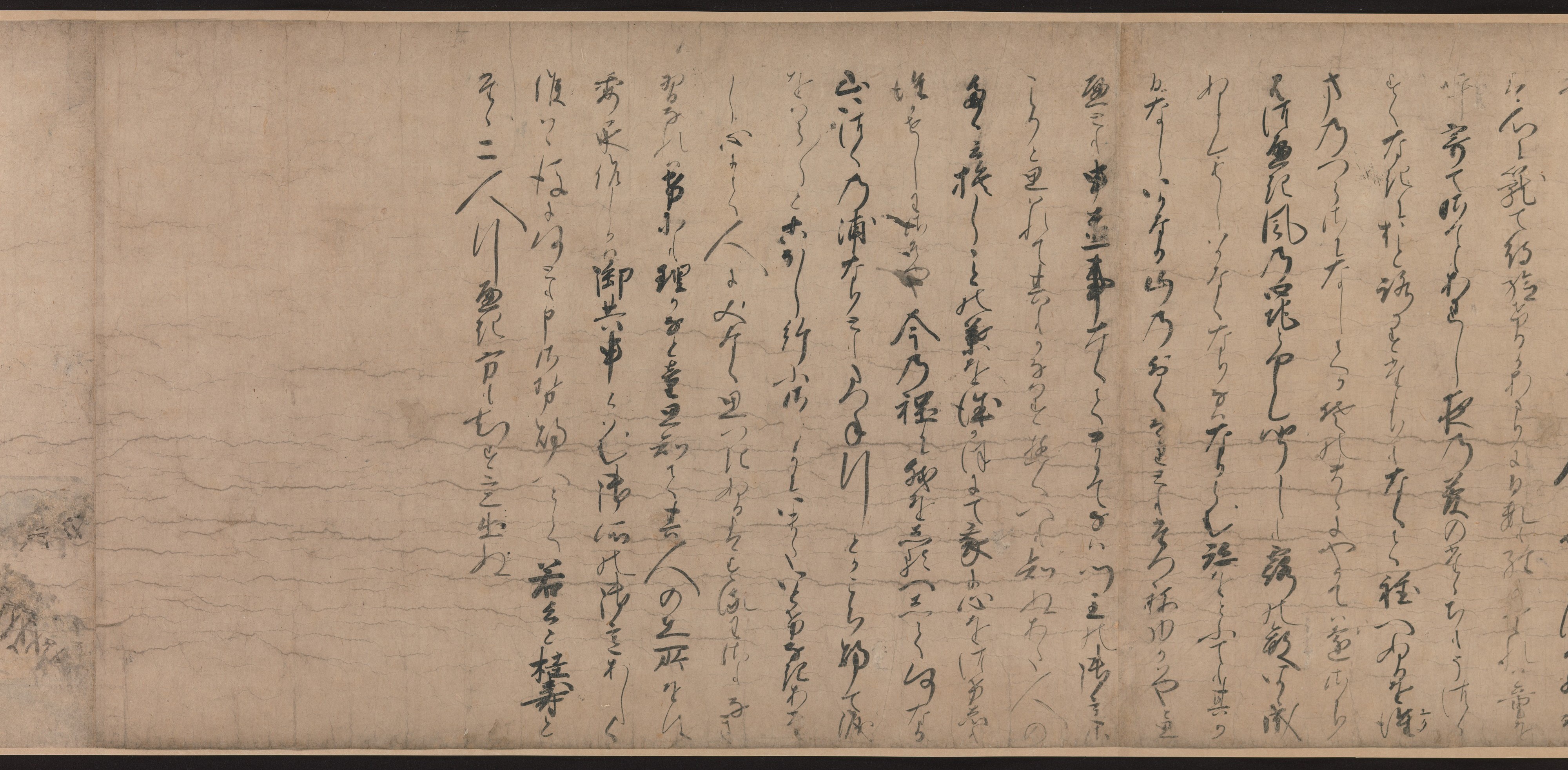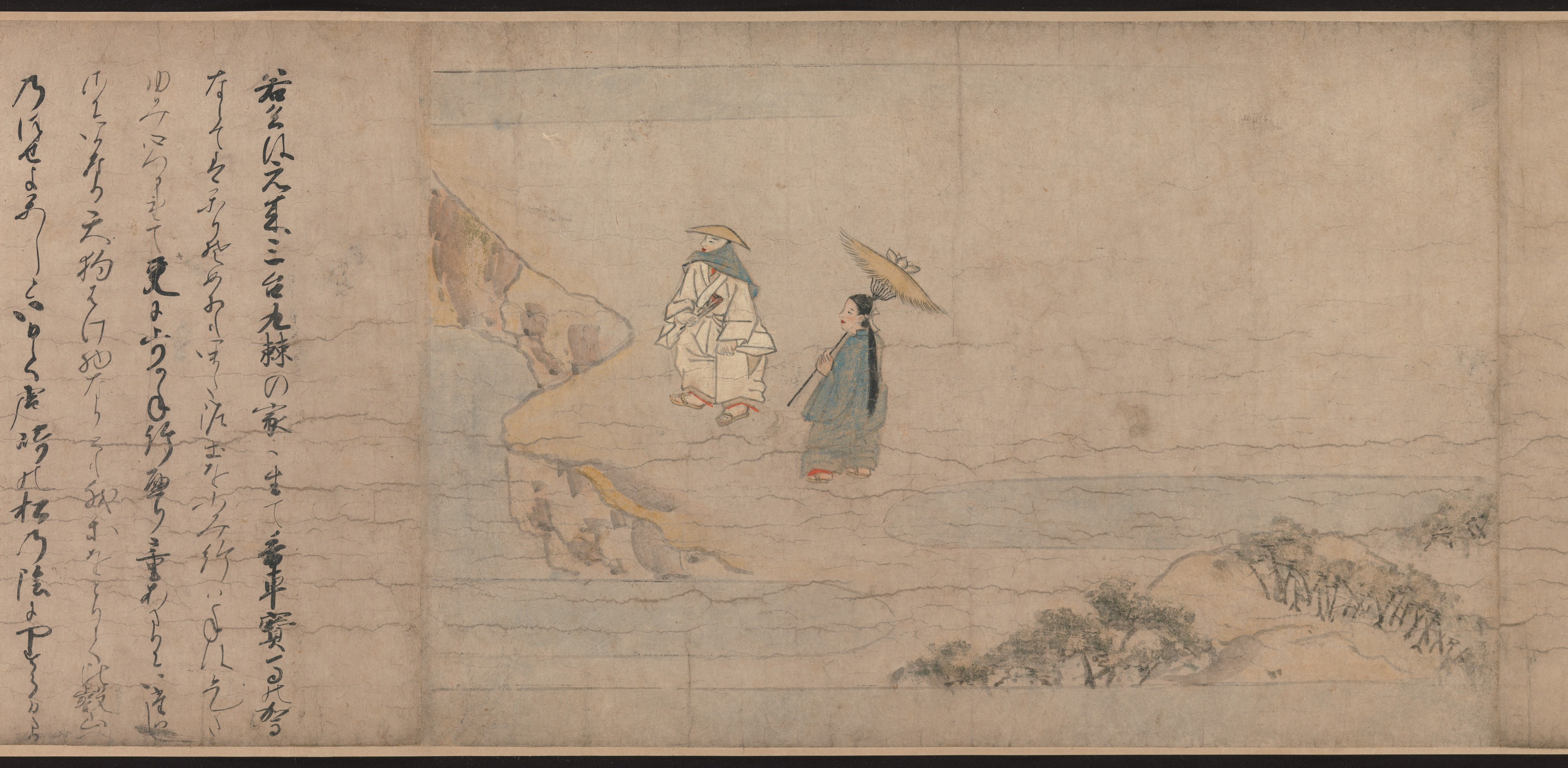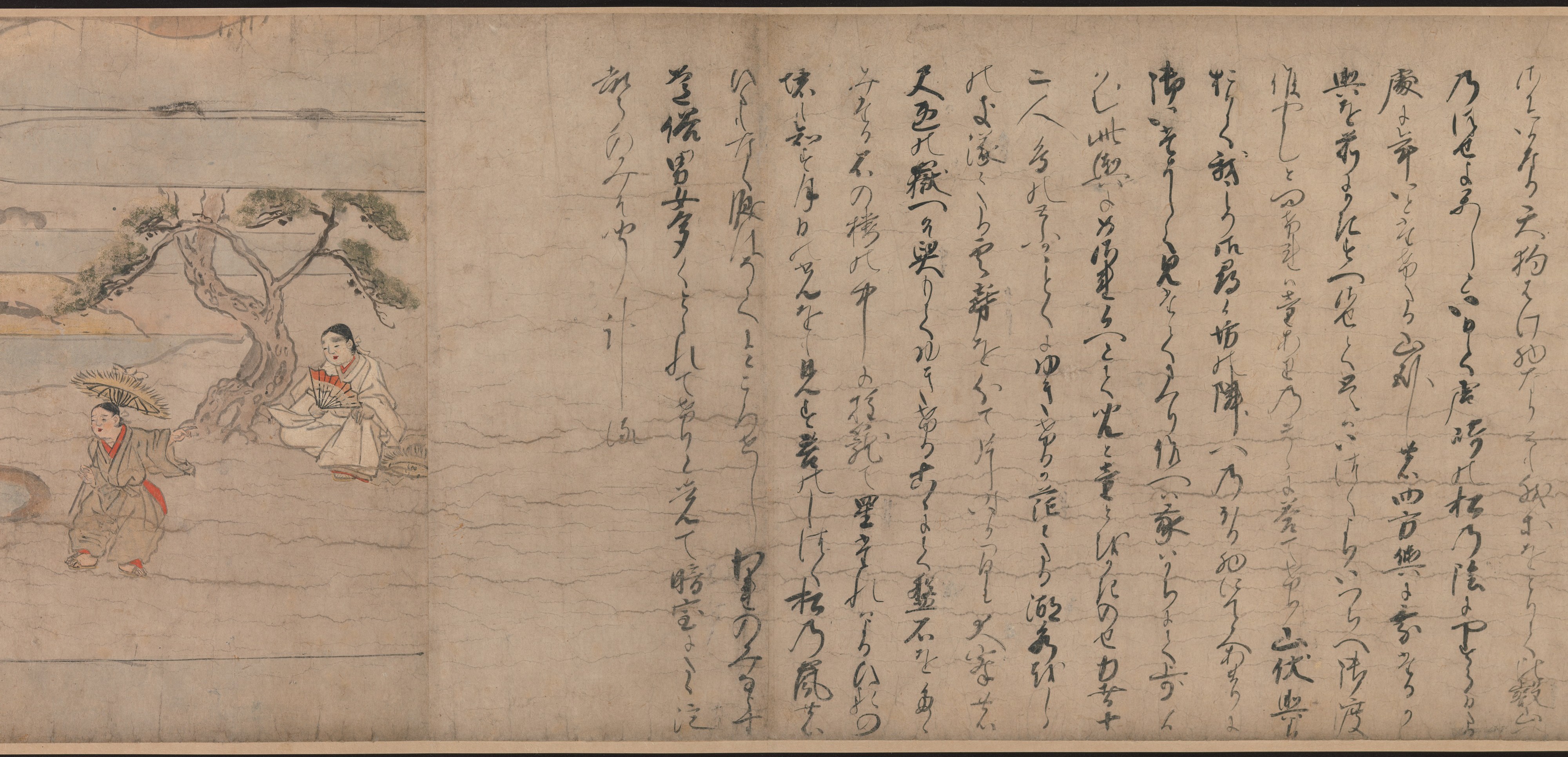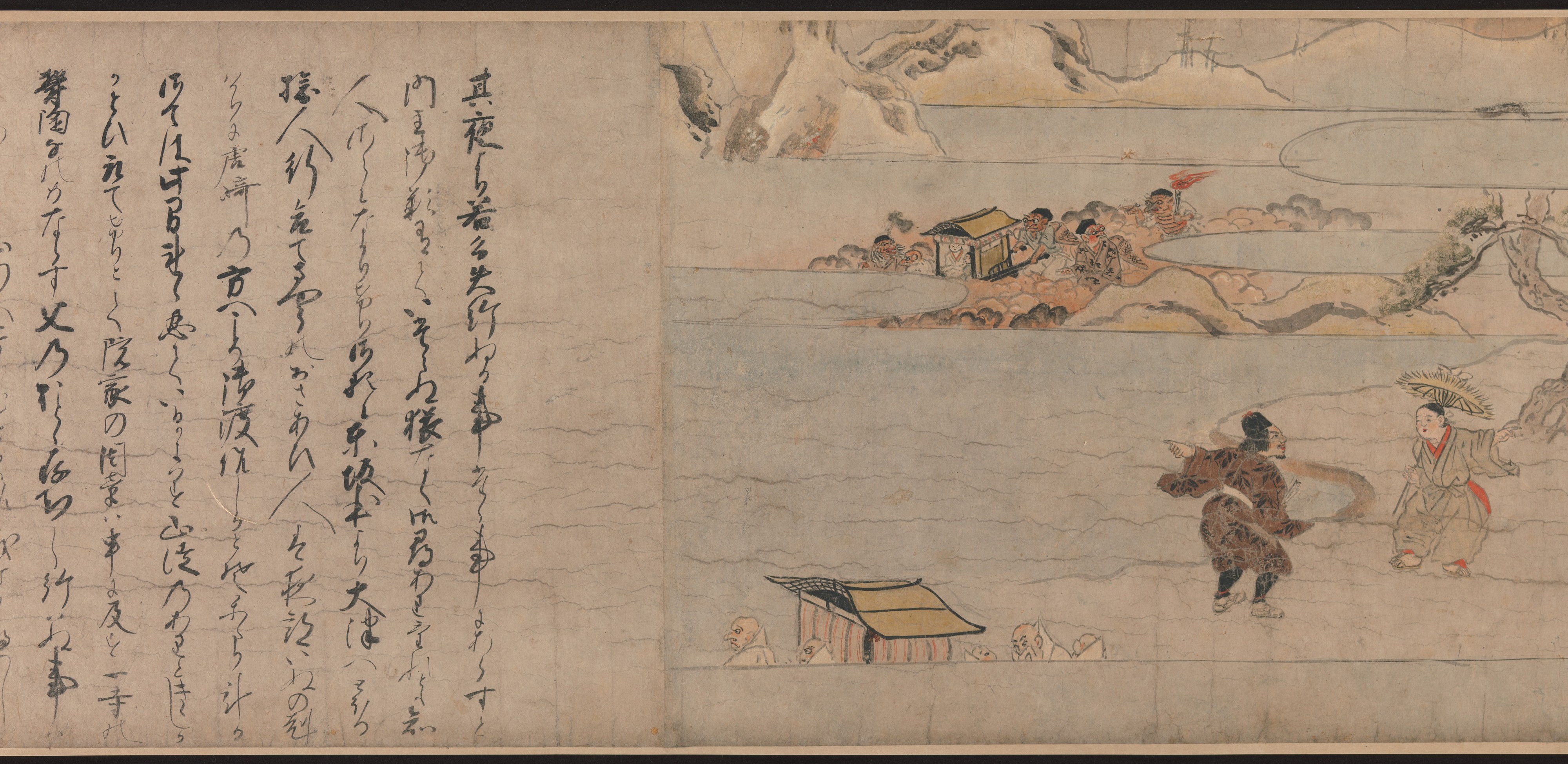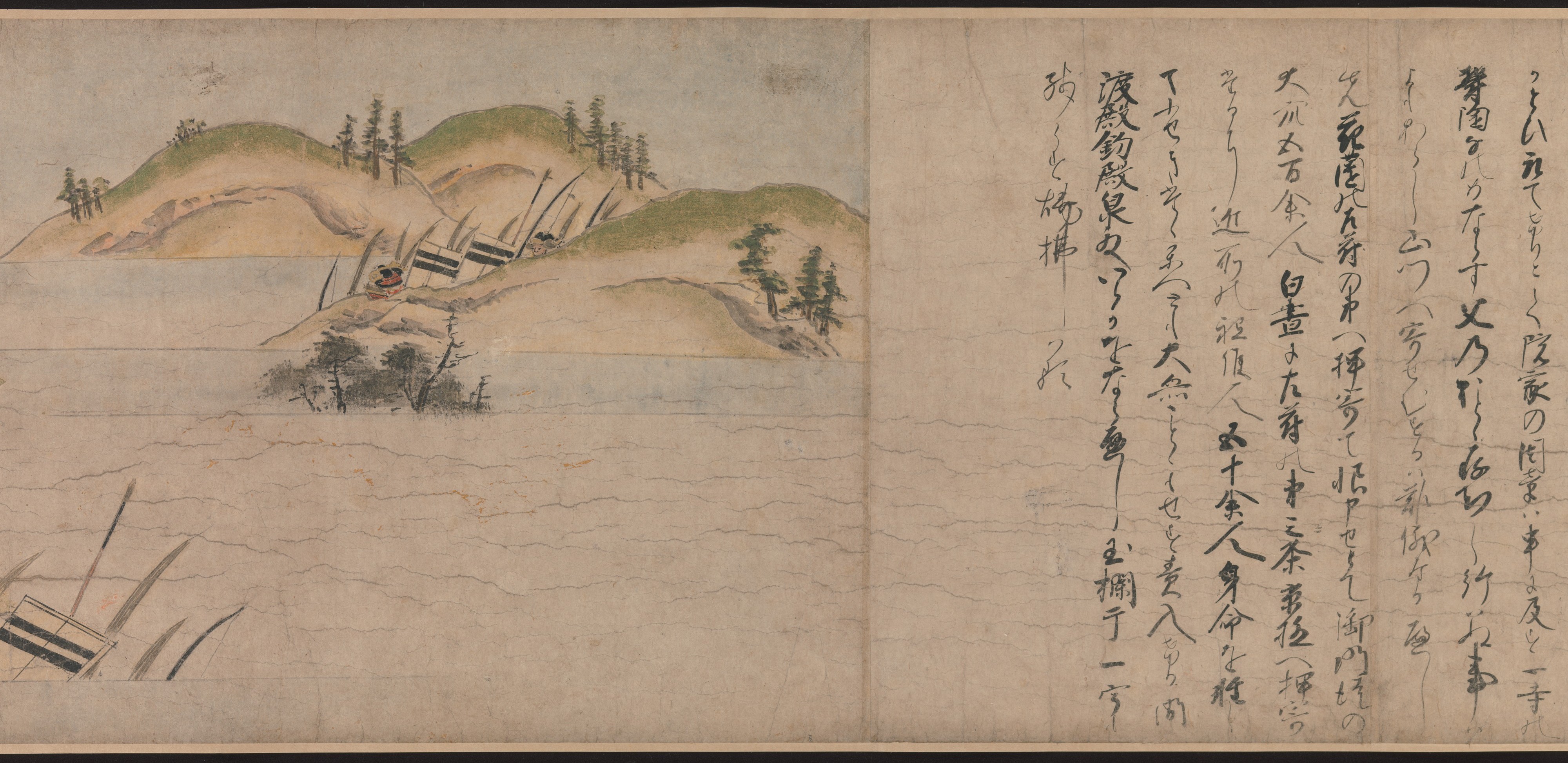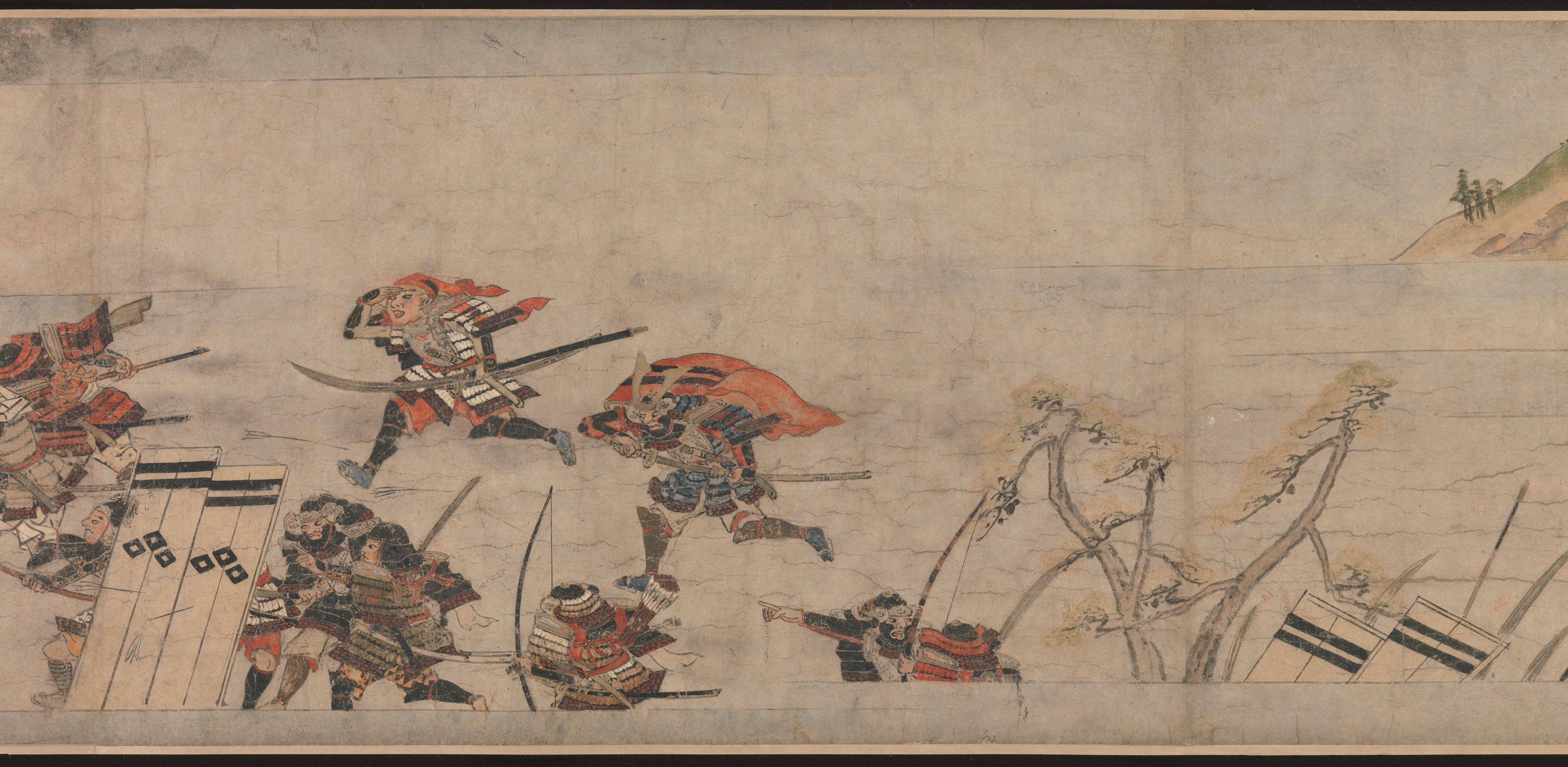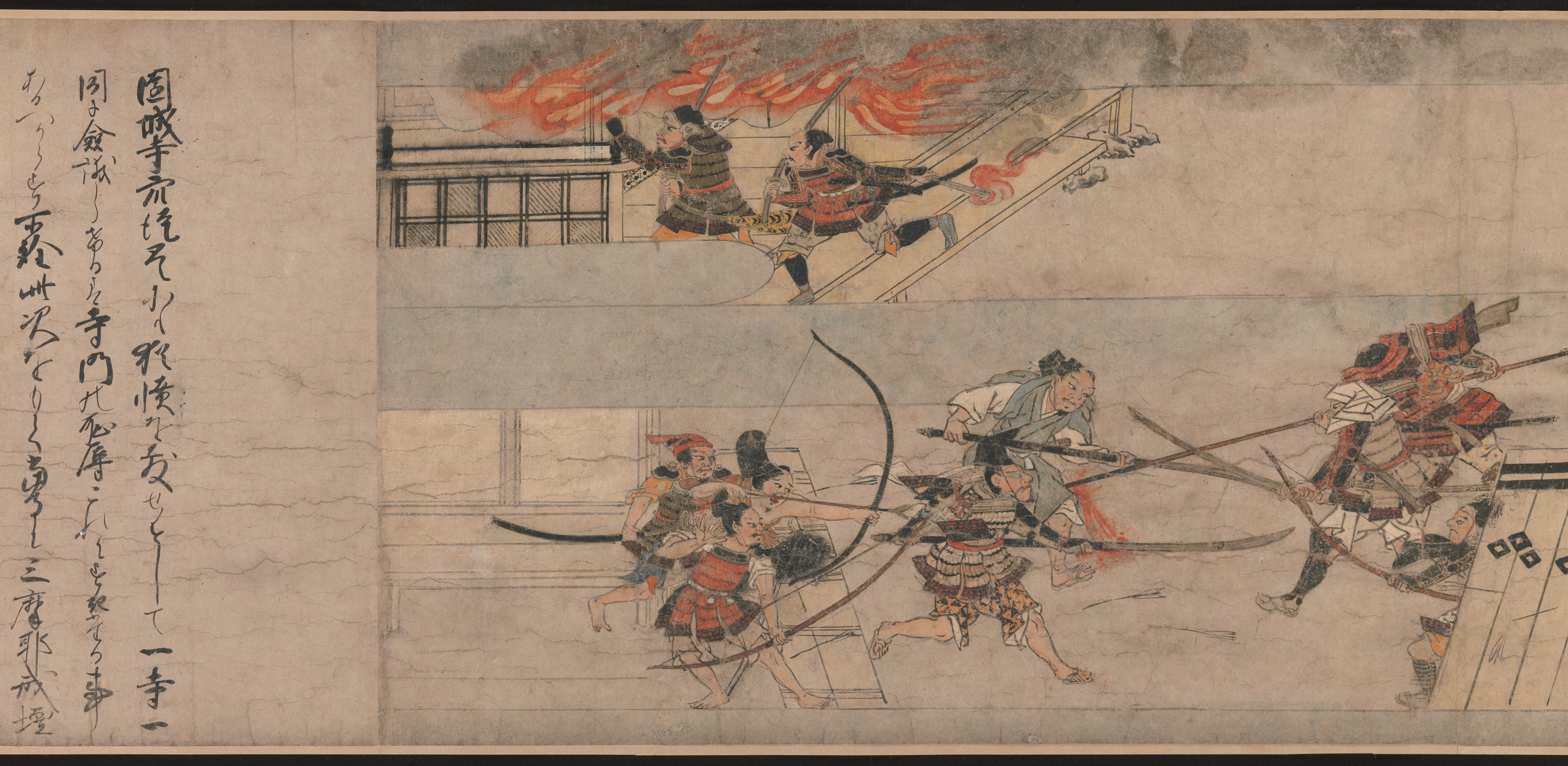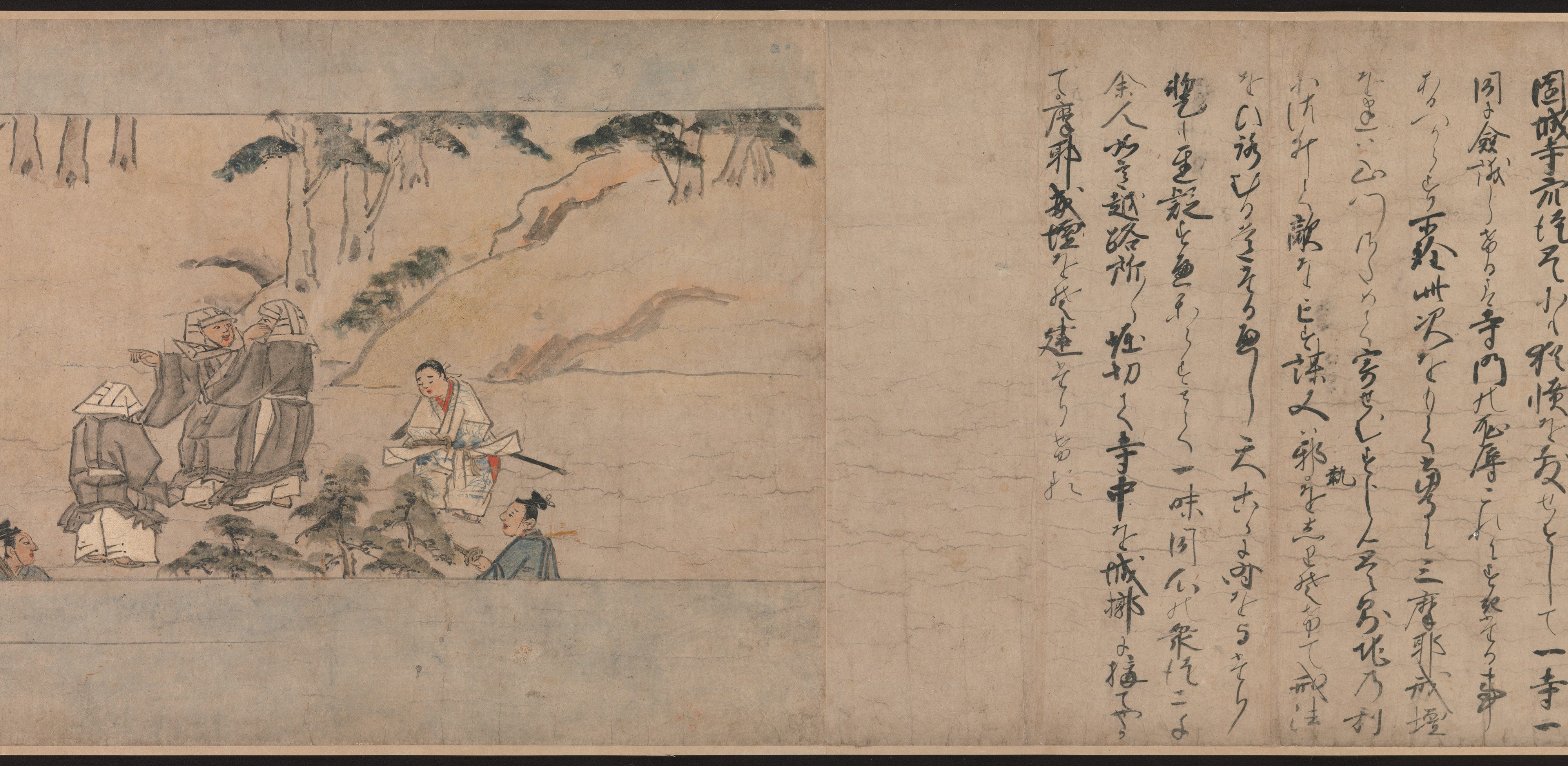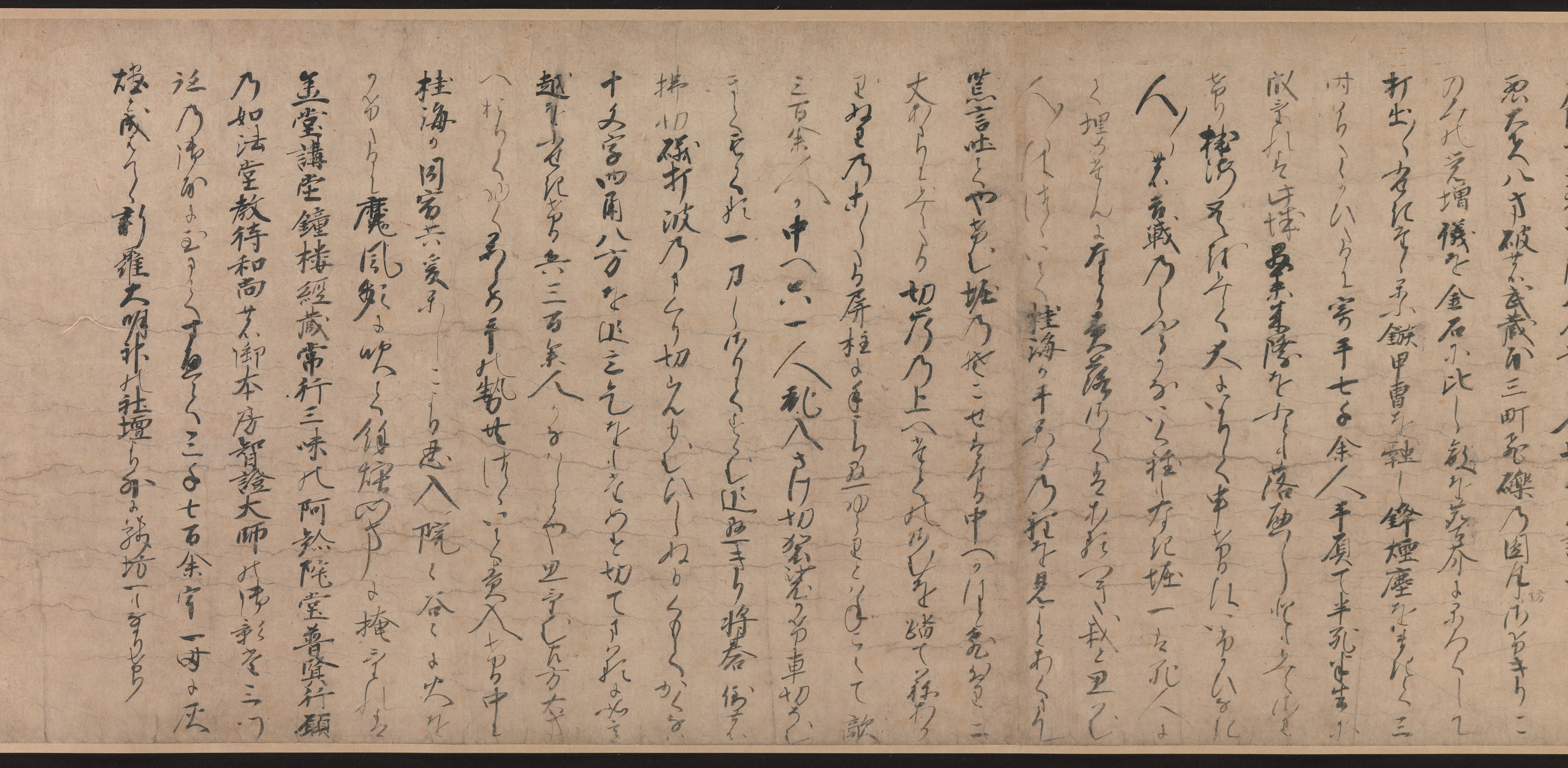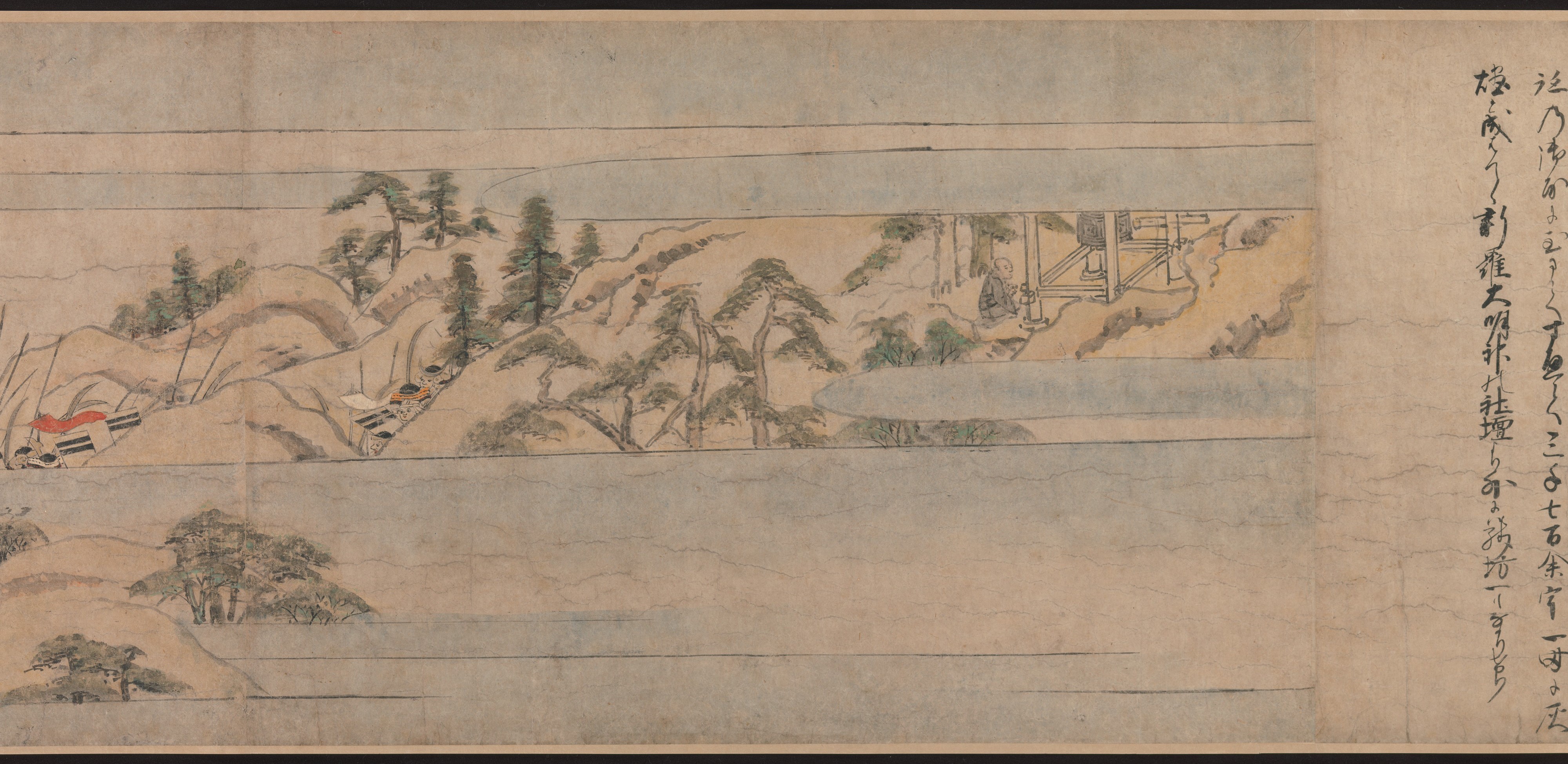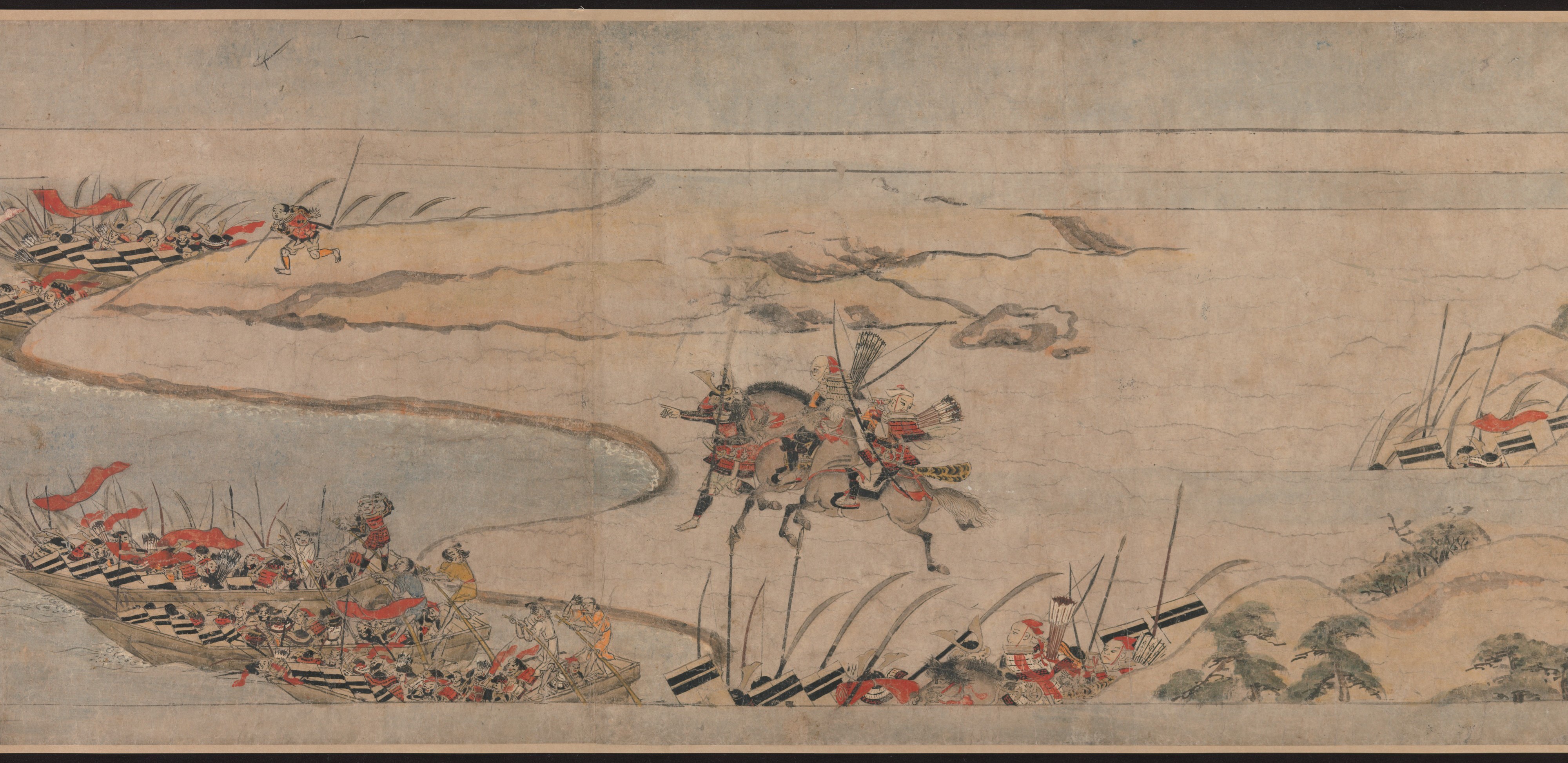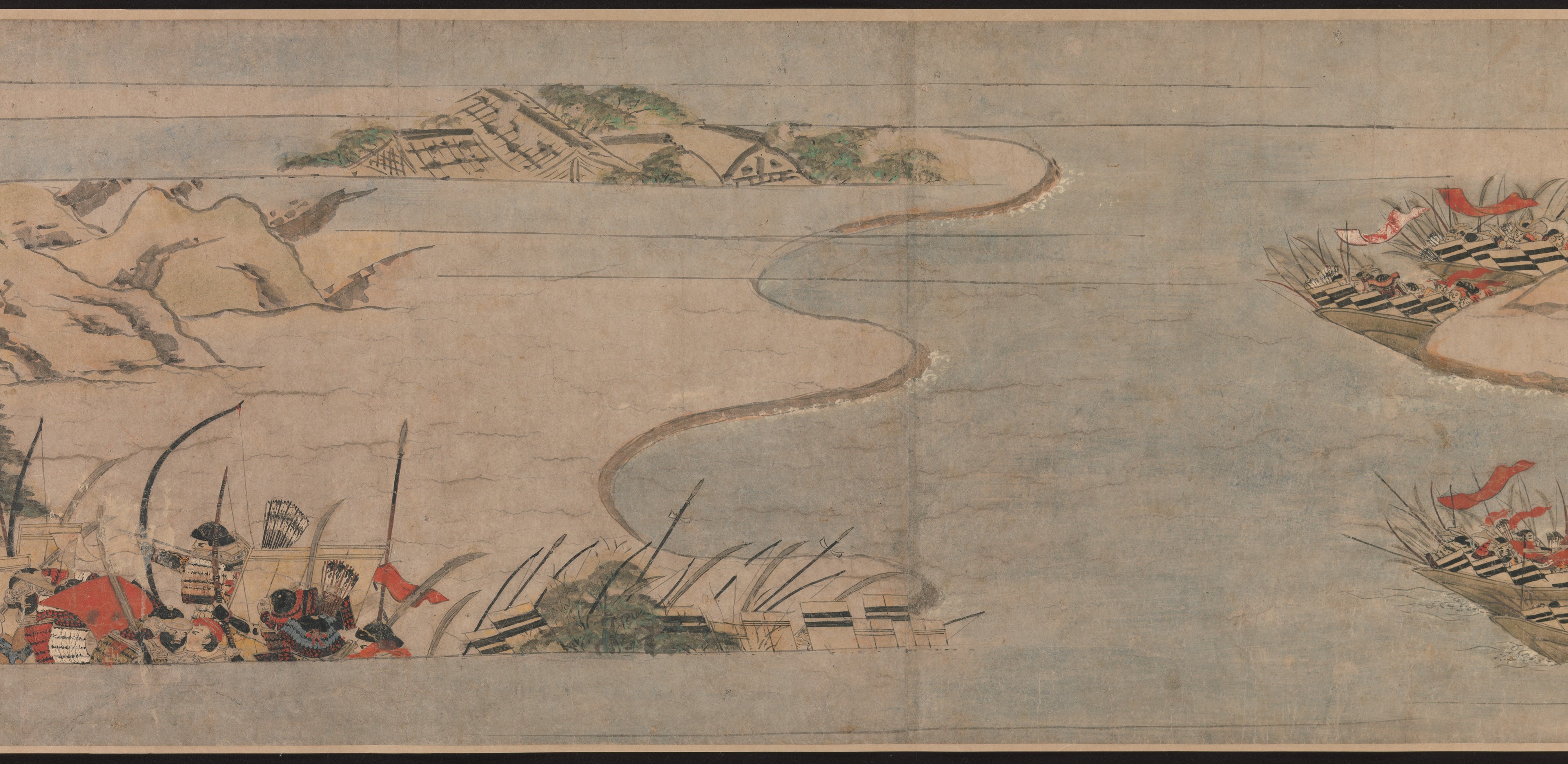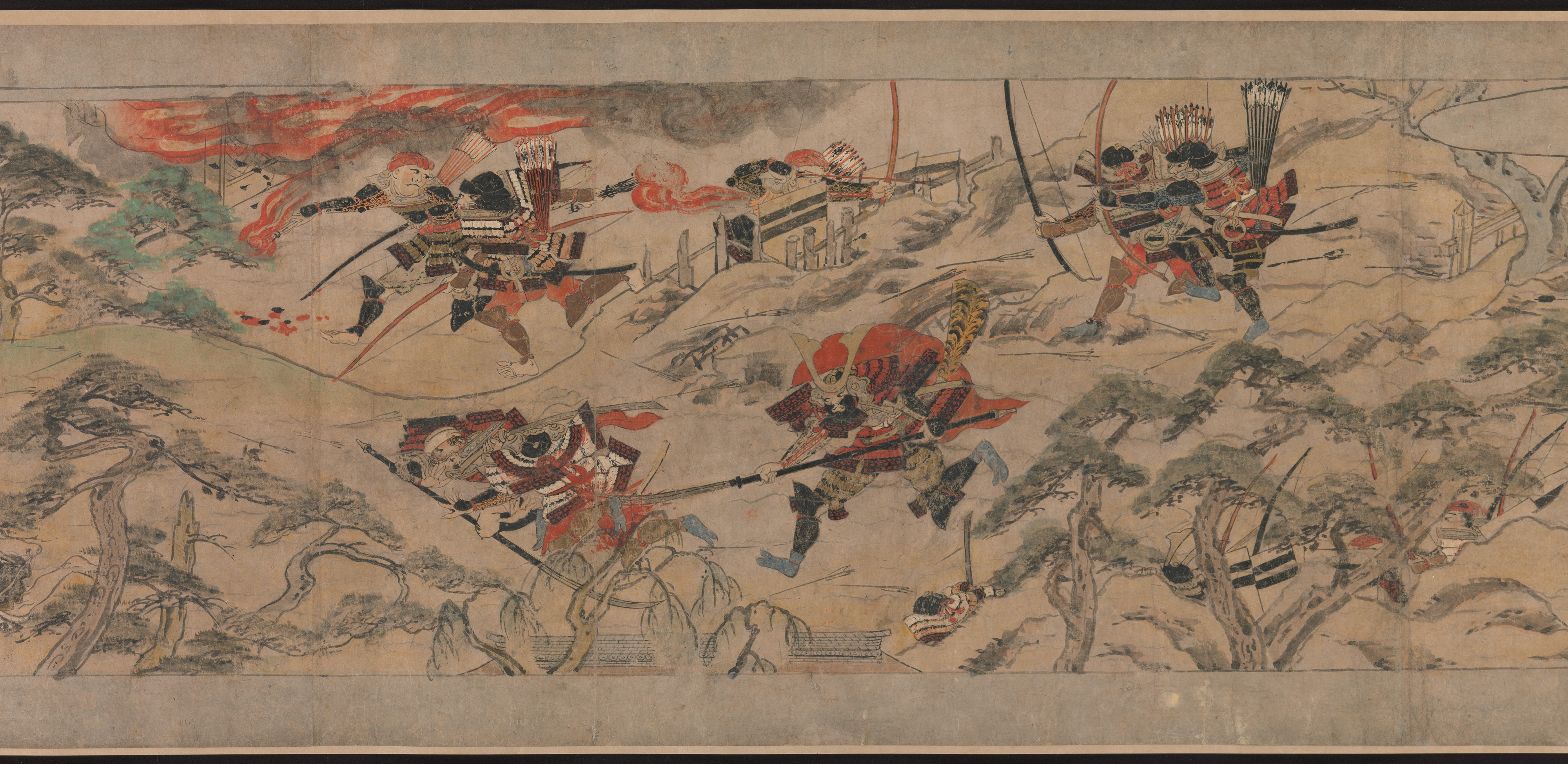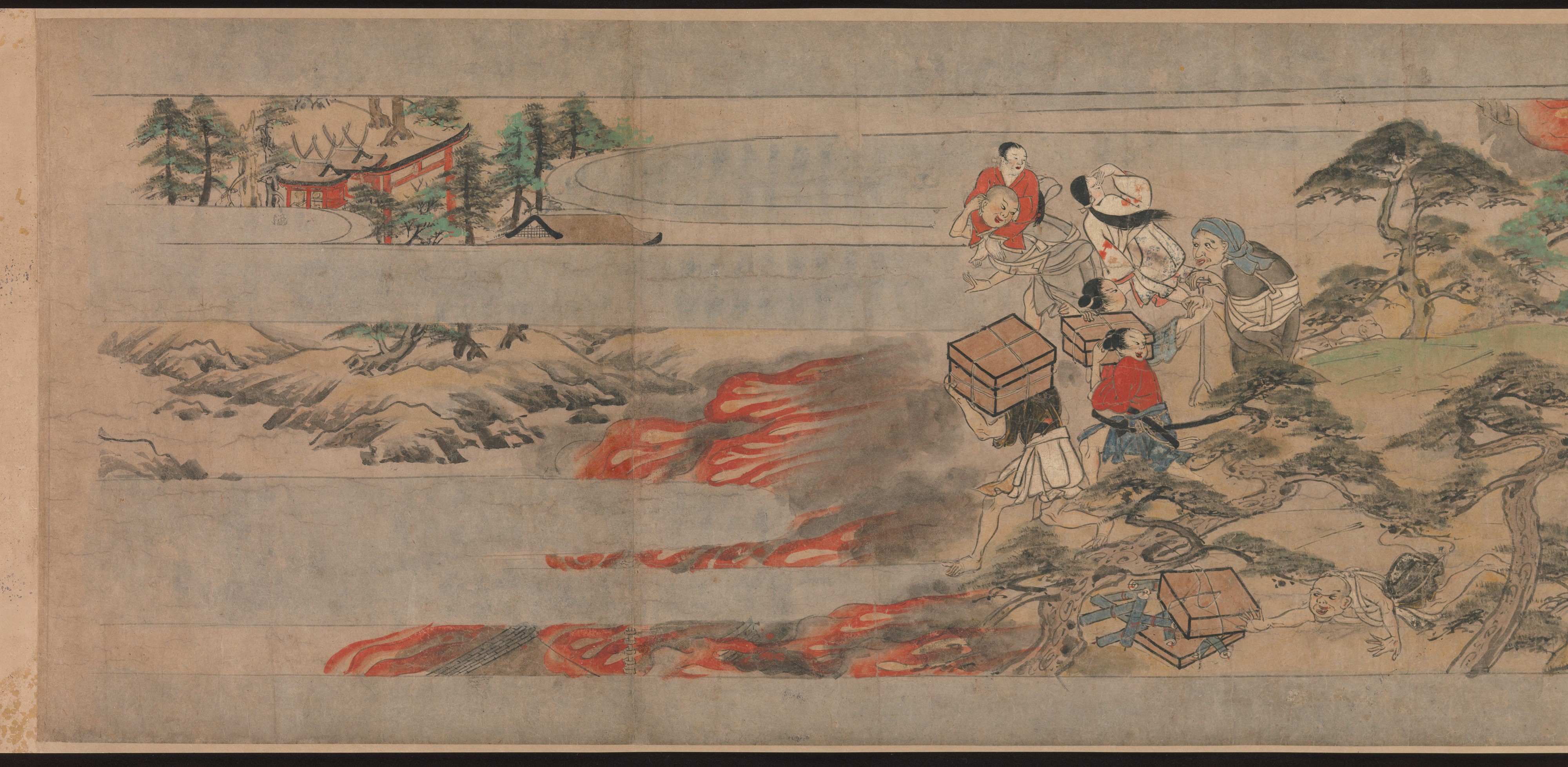A Long Tale for an Autumn Night (Aki no yo nagamonogatari)
Not on view
A Long Tale for an Autumn Night represents a genre of story that became popular in Japan in the late fourteenth and fifteenth centuries. It tells of an amorous affair between a Buddhist monk and a younger male acolyte (chigo). The usual outcome of these tragic tales is the monk's attainment of religious salvation after repenting his obsession with carnal pleasures.
A Long Tale for an Autumn Night comprises three illustrated handscrolls (emaki), with the narrative progressing from right to left. Note the use of a device called iji dōzu (literally, "different time, same illustration"), in which the same figures appear multiple times in a single pictorial segment so that several events can be depicted simultaneously.
At an earlier point, the first section of this handscroll was excised and mounted separately as a hanging scroll. In 2005 the Museum acquired the missing section and restored it to its original location in the story.
A Long Tale for an Autumn Night
Scroll 2
Keiju led Umewaka to Keikai’s room, where they spent one night together. Afterward Keikai returned to Mount Hiei, but he could no longer focus on his religious practice, for he missed Umewaka too much. Heartsick, he retreated from public life. When Umewaka heard of Keikai’s condition, he hurried to Mount Hiei with Keiju at his side. The journey was arduous, and they stopped to rest. An old man approached in a palanquin and offered to take them up the mountain. Exhausted, they accepted his offer, but when they climbed into the vehicle, the man, a mountain goblin in disguise, abducted them.
Umewaka’s disappearance sparked a terrible row, for the monks of Miidera, aware of the relationship between Umewaka and Keikai, suspected that Keikai’s fellow monks at Mount Hiei were responsible. Assuming also that Umewaka’s father was involved, they burned his mansion to the ground. The monks of Mount Hiei, led by Keikai, retaliated by razing the Miidera compound, sparing only the shrine to their tutelary god, Shinra.
Due to rights restrictions, this image cannot be enlarged, viewed at full screen, or downloaded.
This artwork is meant to be viewed from right to left. Scroll left to view more.
